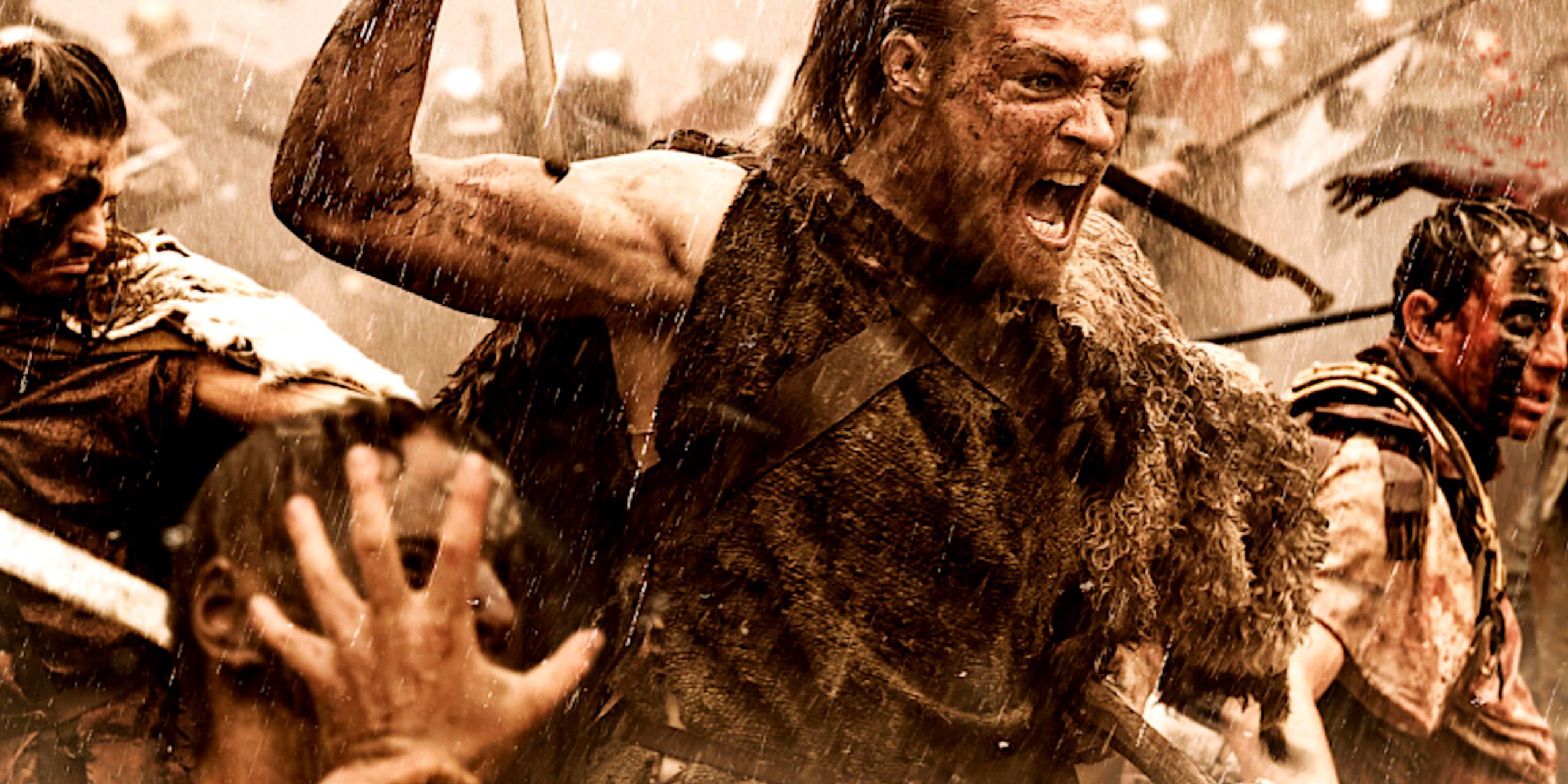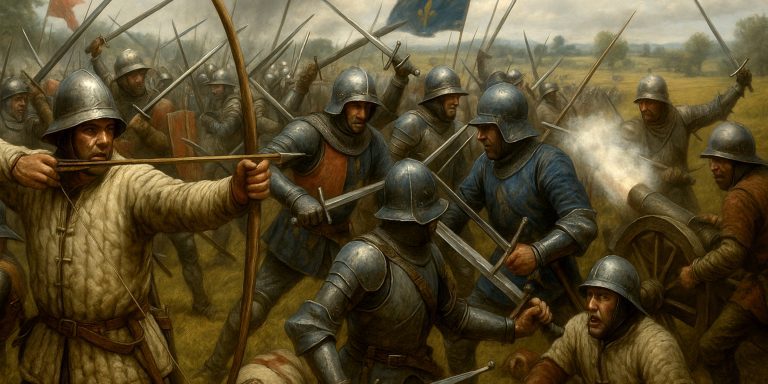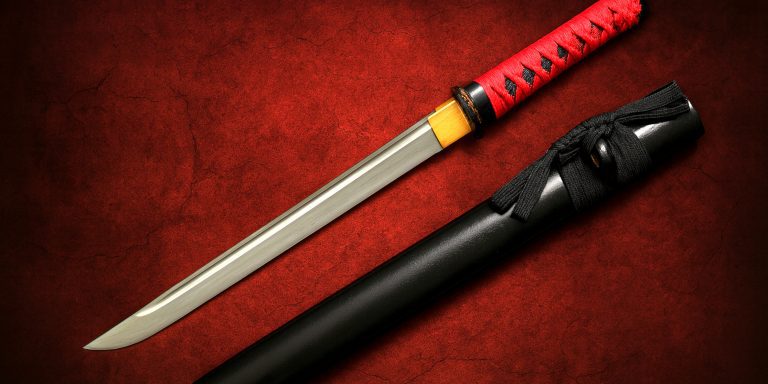
What the show gets right, where it gets dramatic, and what the archaeological record actually tells us
The Germanic tribes have a reputation that swings wildly between forest-dwelling ghost stories and swaggering warriors in wolf pelts. Modern shows like Barbarians love the chaos of that image. I get it, it looks cool. But the real weapons and armour they used were shaped by scarcity, craft knowledge and regional identity more than pure rage. When you look at the artefacts up close, the story becomes far richer and strangely relatable. You start to see how these communities fought with what they had, not what a prop department dreamed up.
Below is a grounded look at the equipment that defined Germanic warfare, drawing from archaeology, Roman accounts and the odd grave find that makes you double check the notes because it feels too cinematic to be real.
Spears, Shields and the Reality of Germanic Combat
Roman chroniclers kept complaining about spears. It is almost funny how often they mention them. Spears were the backbone of Germanic fighting styles for a simple reason. They were cheap to make, easy to repair and incredibly adaptable. A long spearhead fixed to an ash shaft gave a fighter reach and control. Shorter throwing spears filled the gaps, often used in quick volleys before the lines clashed.
The shield was the closest thing to standard equipment. Round, wooden and bossed at the centre, it offered protection without sacrificing movement. If you imagine tight phalanx walls, dial it back. Germanic formations were looser and more flexible. A lot depended on local custom, the charisma of the leader and the experience of the fighters around you. The shield was still the anchor of survival. It absorbed impact, hid feints and worked as a shock tool when shoved into an opponent’s face.
Swords, Axes and the Status of Steel
Not everyone carried a sword. Good steel was expensive, and a sword like a seax could travel through generations of a family. When you see a Germanic blade in a museum, you can feel the pride that must have wrapped around it. Early swords were straight, double edged and made for hefty cuts. Later blades start to show more pattern welding, a technique that fused different irons to create stronger and more flexible results with a kind of rippling pattern that looks almost deliberate. It probably was.
Axes were more common and more varied. Some were small and quick, others bigger with enough weight to break a shield rim. They served domestic and martial purposes, which explains why they show up almost everywhere. Films often oversell their brutality, but a well handled axe is far more controlled than people think. Germanic smiths made tools first and weapons second, yet the line often blurred.
Armour, Helmets and the Choice to Stay Mobile
Here is where expectations and reality part ways. Full armour was rare. It existed, yes, but it was limited to elites, kings and well connected fighters. Most warriors trusted agility more than metal plates. Mail shirts appear in high ranking burials, usually short, practical and showing signs of being repaired many times.
Helmets followed a similar pattern. They were precious items, often decorated, sometimes shaped to signal identity. The iconic crests or animal masks you see in modern retellings existed in small pockets, usually tied to ritual or status. The average Germanic fighter went into battle bare headed or wearing a simple leather cap. It was a risk, but mobility and vision mattered more in the dense forests and uneven ground that framed much of their warfare.
Clothing, Cloaks and Everyday Protection
Wool, linen and leather did most of the work. Tunics layered with cloaks could absorb glancing blows more reliably than people expect. Leather belts and scabbards helped carry gear without slowing movement. Fur was not just aesthetic. It provided warmth and comfort in colder regions, especially during long campaigns. The tribes lived in climates that were harsh at the best of times, so there was a practicality to their clothing that often gets overlooked.
What the Shows Get Right and What They Overplay
Barbarians does a decent job with materials and textures. You can feel the grit of the world, the simplicity mixed with prestige. But it leans heavily into dramatic armour styles and uniformity that never really existed. Germanic warriors were a patchwork of local traditions. Wealth varied. Access to metal varied. A war band could include someone in a beautifully made mail shirt standing beside a cousin in homespun wool with nothing more than a spear and a wooden shield.
The show captures the spirit of defiance and the tension between Roman order and tribal independence. The equipment, though, is often cleaned up for the camera. Real blades carried scratches, dents and heatmarks. Shields took a beating. Armour creaked and snagged. Germanic warfare was messy and improvisational, not choreographed.
Why This Gear Worked
For all the romanticising we do today, their equipment matched their context. Tribal warfare needed speed, flexibility and knowledge of terrain. A spear and shield combination fits that world perfectly. Light armour, or none at all, kept fighters moving. Swords became personal heirlooms rather than squad issue. Helmets were symbols before they were protection.
When you see it all together, the Germanic arsenal feels less like a mismatch and more like a system built for survival, honour and identity. It tells you how they lived, how they fought and what they valued.
Watch the Brbarians trailer:



